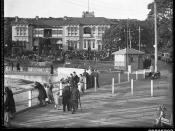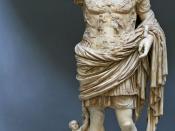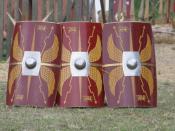The Roman Ability to basically conquer half of the world, from their beginnings as a small city on the Italian peninsula is amazing. Most of their success is based solely on their military might. Discussed in this paper is a small background of the military, and an outline of their nonmilitary roles as a professional, standing army.
The Roman army was officially deemed professional in the year 13 BC, when Augustus laid out the regular period of legionary service at sixteen years. This term of service was to be followed by a four-year term of service exempt from daily duties. The veterans were under the command of the curator veteranorum (Watson 12). During the early days of the republic, there was little military force in or near the actual city of Rome. First, there was the Praetorian Guard, and later there were the equites singulares, or the urban cohorts.
Also, there was the vigiles, the fire brigade (Watson 15). These forces were, for the most part, under the immediate direction of the emperor. The majority of the soldiers in the imperial roman army were, in fact, legionaries. A legion was made up of an estimated 5,500 men. With somewhere between 28 and 30 legions, that makes some 160,000 men (Watson 13). This is said to account for about fifty percent of the armed forces as a whole. It should be duly noted that the number of legions was always changing. The Praetorian guardsmen were definitely favored by the emperor, seeing as they were the protector of the city, and most importantly, him. The army regulars were jealous of the praetorian's double pay, and shorter term of service. There was a third considerable force of men, the auxiliaries (Watson 12). The basis of this force is in the times of...



Roman army
This is not my best work, but with some tweaking, it could be yours!
1 out of 1 people found this comment useful.